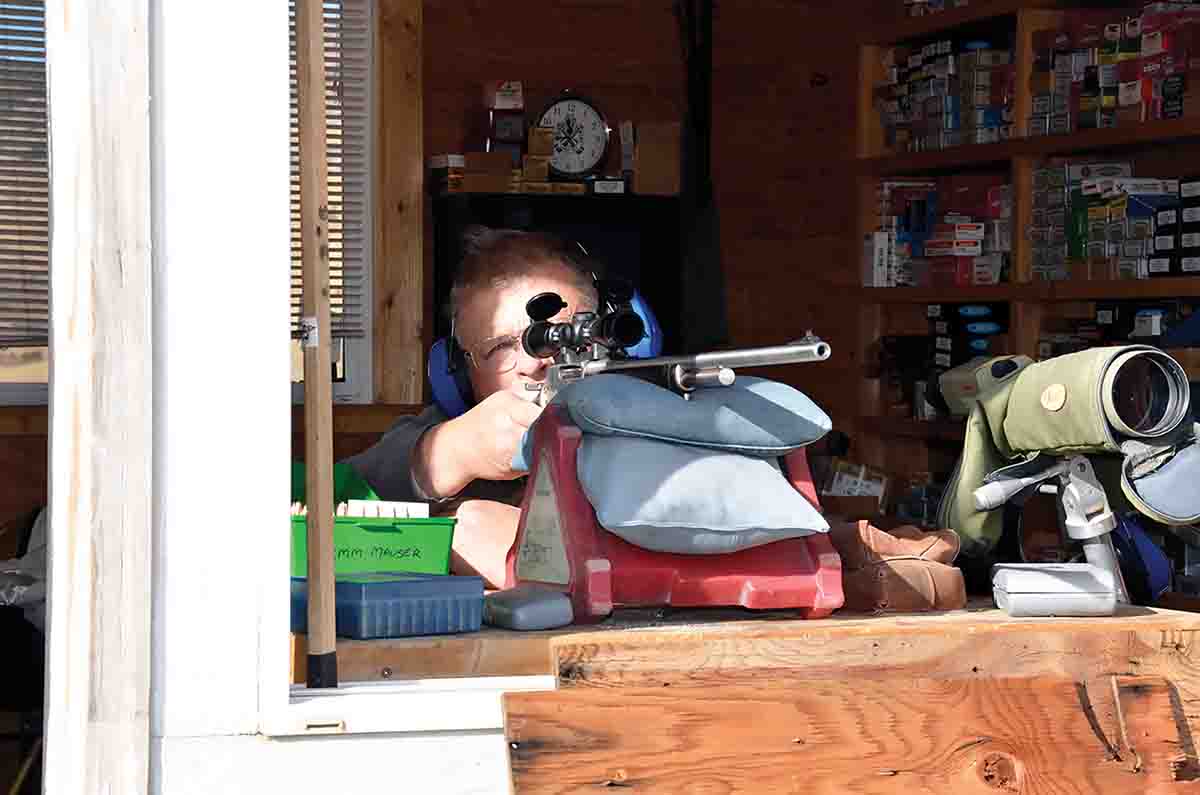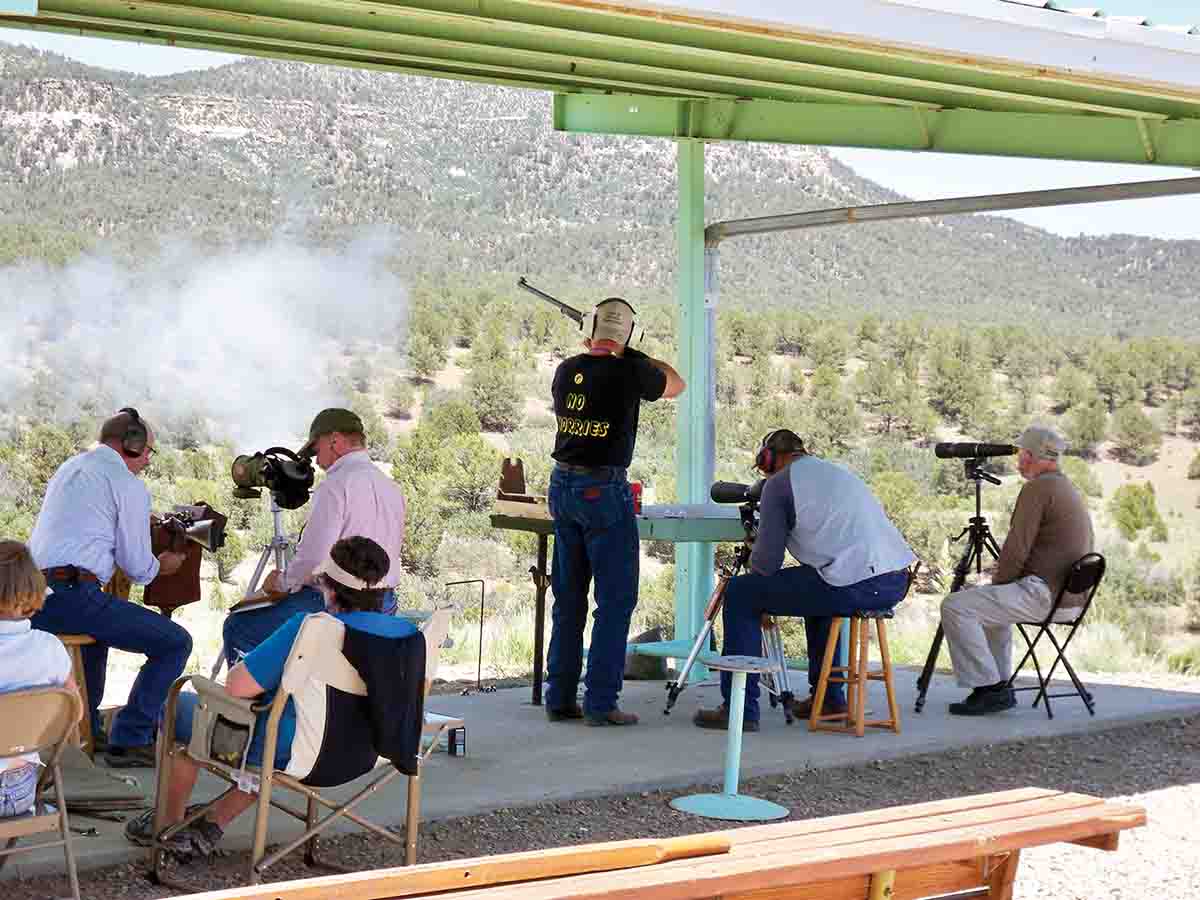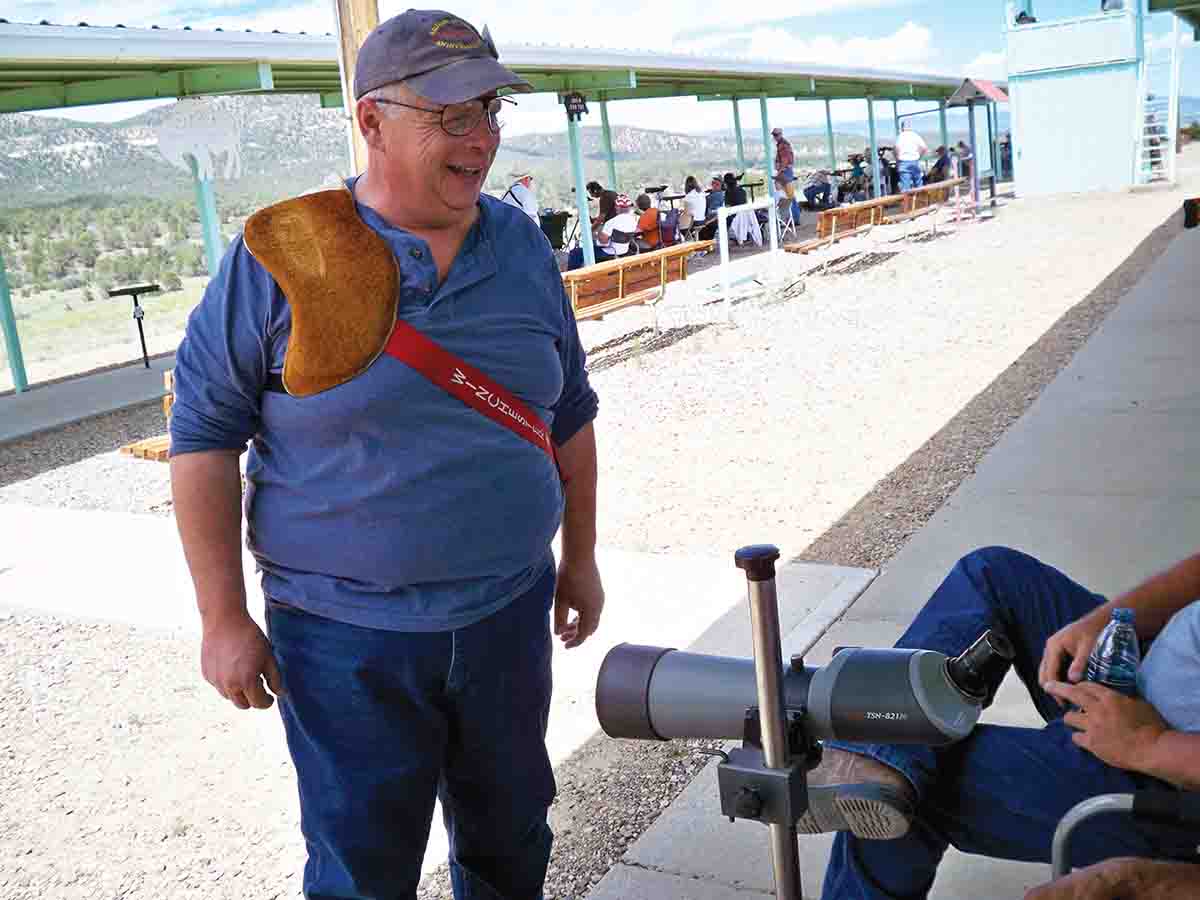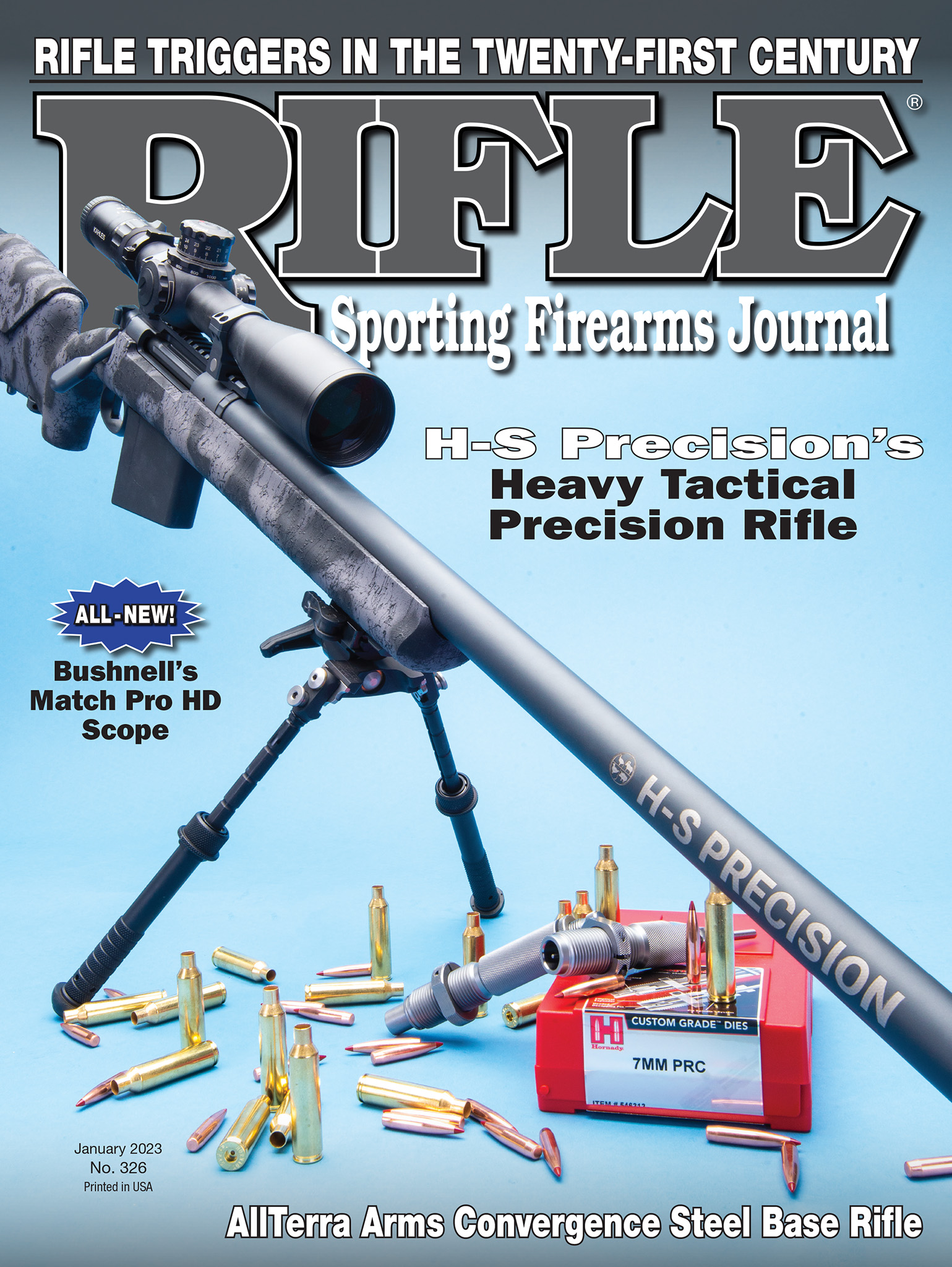Down Range
Recoil
column By: Mike Venturino - Photos by Yvonne Venturino | January, 23

Some years back, I was doing load testing when a friend dropped by asking if he could sight-in his rifle for the upcoming elk season. He was disappointed with his unpadded Remington Model 700 .30-06 Springfield groups. He was a good hunter, but seldom shot rifles for recreation. I asked him if I could try a group. Where he was only getting 2.50- to 3-inch, 100-yard groups, while mine was under 1½ inches. He said, “But the recoil isn’t bothering me.” Obviously, it was, but at that time, I was shooting groups from benchrest more days than not, so I was more inured to recoil. However, I did find his unpadded .30-06 Springfield recoil unpleasant and if I’d fired more groups with it that day, I’m sure they would have grown in diameter.
Over the decades I’ve shot “elephant rifles” such as .375 H&H, .416 Remington, .458 Winchester, and even .470 and 577 Nitro double rifles. Those rifles belonged to others and my shooting them amounted to only a few rounds each. A fact I’ve noticed is that when anyone shows up at a gathering with an “elephant rifle” they insist everyone give it a try. I think they just want to pass the “joy” (pain) around. An understatement is that I’ve found shooting “elephant rifles” less than enjoyable.

As an avid Black Powder Cartridge Rifle (BPCR) shooter having participated in hundreds of events over a 40-year period, I’ve fired many tens of thousands of black-powder handloads through big-bore single-shot rifles. The uninitiated might say, “Black powder? Those are mild loads. No great recoil there.” Try laying behind a .45-caliber rifle for a 40- or 60-shot BPCR silhouette match. (Add in at least another 20 rounds for sighting shots.) Firing prone with even a 12-pound rifle, 560-grain bullets at only 1,150/1,200 fps give a lot of “push” when fired.
In this modern age, there are many ways to reduce rifle recoil. Of course, there have been rubber recoil pads on rifles for decades. In my opinion, they do a pretty good job and are not terribly unsightly on modern rifles! I wouldn’t care to have a rifle more powerful than say a .308 Winchester without it being fitted with a recoil pad. Otherwise, probably the most common recoil reducing aid today is the muzzle brake. They may reduce recoil but I consider them evil little devices. Directly behind the shooter is the only safe spot when a muzzle-braked rifle is fired. Even with ear protection, onlookers to the sides will feel that their eardrums have been violated. Another friend visiting my shooting house asked if he could try a few shots with his muzzle-braked .300 Weatherby. His first shot blew my clock off the wall more than 14 feet away.

Many years ago, Yvonne walked into the room after I’d had a long day of shooting my first Sharps reproduction – a .50-90. I had just taken my shirt off so she saw the huge blue bruise on my right shoulder. It upset her to the point she insisted I take a break from shooting for a few days. She also asked what I could do to keep those rifles from mauling me. I explained about not wanting to alter them due to their value. She had heard or seen slip on recoil pads somewhere. I explained that neither would slip on recoil pads work for me. My usual procedure when bench-testing rifles is that I take more than one, sometimes several, to the range at a time. Then one is shot, set aside to cool while another is shot. Changing a slip on pad from rifle to rifle would be a nuisance and buying enough slip on pads for all my rifles just wasn’t feasible.
To make a long story short, the answer was to pad myself instead of the rifle. First tried was a pad consisting of some space-age material that had supposedly been used to soften landings of space capsules. It was pinned to my shoulder and worked well enough but flopped about when doing minor chores such as swabbing a rifle barrel. Then came pads that slip over the shooter’s arm with straps to secure them. I ordered two from Buffalo Arms and had Yvonne alter the straps so instead of crossing my chest, they attach to my belt or jeans. They are comfortable enough to wear all day and are always there when I go to fire a rifle. One stays in my shooting house and the other travels in my shooting kit. My shoulder might feel a mite sore after a long weekend’s BPCR Silhouette event, but no more is it bruised up.


